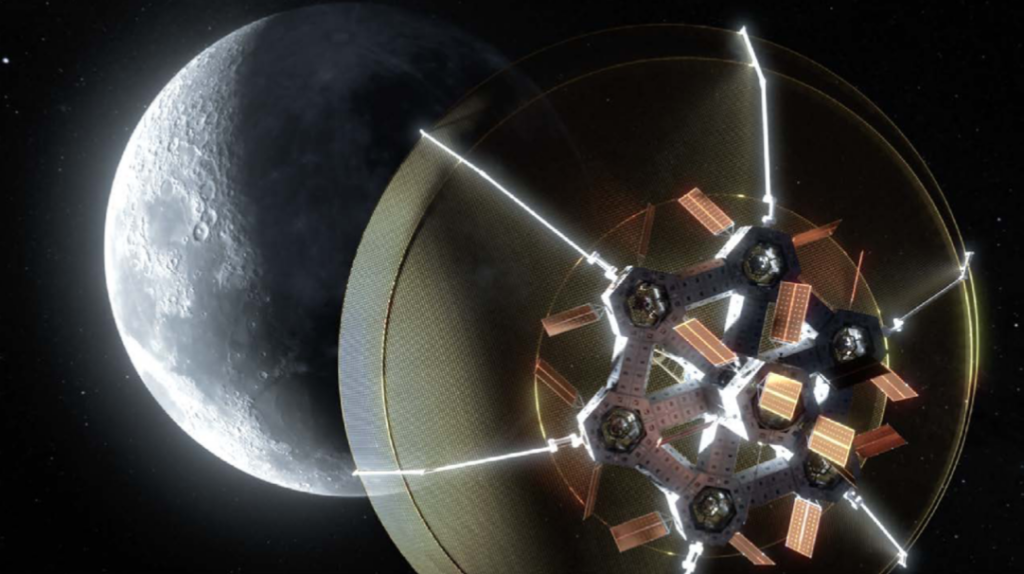THERESA HITCHENS

WASHINGTON: The space industrial base is “tactically strong” with high levels of capital investment and innovation, but “strategically shallow” in that a lack of funding from US government agencies, including the Defense Department, puts sustainment of the current boom in question, according to a new study sponsored by the Pentagon’s Defense Innovation Unit.
“While the pace of innovation and investment in the U.S. is at an all-time high, participants cautioned that this will not be sustained without strategic direction, robust adoption of commercial space capabilities expressed in meaningful contract opportunities, strategic workforce development, attention to fragile domestic supply lines, and addressing the anemic funding to prototype, validate and accelerate the adoption of innovative and disruptive space capabilities for national security,” the study finds (emphasis in original) [PDF].
It further suggests that without a strategic shift to make the space economy a top-level government priority the US will lose what the authors paint as a vital race with China.
The findings, explain NASA Administrator Bill Nelson and Chief of Space Operations Gen. Jay Raymond in a forward, do not represent an official government position. However, the forward states, “they are extremely valuable inputs for consideration.”
The study, State of the Space Industrial Base 2021, was based on a survey by Quilty and a DIU workshop that included space sector, DoD and NASA representatives — although somewhat oddly no one from the Commerce Department was involved, despite its role in boosting private space enterprise.
Industry representatives included skewed heavily toward so-called “New Space” companies and startups. For example, while Northrop Grumman and Lockheed Martin participated, Boeing, SpaceX and ULA did not. And of the 57 participants in the industry survey, 41 were classified as “non-traditional” defense contractors.
The authors of the DIU study are: Brig. Gen. John Olson, Air Force mobilization assistant to Raymond; Steve Butow, DIU Space Portfolio director; Col. Eric Felt, head of Air Force Research Laboratory’s Space Vehicles Directorate; Thomas Cooley, AFRL’s chief scientist under Felt; and Joel Mozer, Space Force director of science, technology and research. All are well known for their future-oriented views, as well as their strong concerns about China’s space ambitions.
 The US space economy has continued to boom since DIU’s first industrial base study last year, the study stresses, driven in large part by private sector investment and venture capital.
The US space economy has continued to boom since DIU’s first industrial base study last year, the study stresses, driven in large part by private sector investment and venture capital.“A total of $199.8 billion of new capital investment has been added to the commercial space industry since 2012 and $14.9 billion of that was added in the first half of 2021 alone,” the study states.
This growing level of investment has resulted in a number of opportunities for the US government “to build an inclusive Cislunar economy; to set key technical and behavioral standards which advantage democracies; to leverage existing commercial satellite capabilities for a Hybrid Space Architecture enabling Joint All Domain Command and Control (JADC2); to create a space internet; to build a space superhighway for logistics; and to apply space solutions” to US and DoD climate change priorities.
However, those opportunities are in danger of being missed by a lack of a coherent government strategy to reduce risks and provide incentives for the space industrial base, the study says. This problem, the authors assert, stems from “failing to recognize the rising threat of China — a nation focused on displacing the U.S. as the predominant space power by 2049; and second, by failing to employ all instruments of national power to accelerate and synergize advancements in commercial, civil and national security space.”

Participants in the first Breaking Defense Space Survey also overwhelmingly named China as the greatest threat to US space systems — despite the fact that Russia has demonstrated more real-world counterspace capability. Overall, nearly 78% said China was the country presenting the greatest threat; among DoD respondents, 71% did so.
The study lays out 10 recommendations for actions by the White House and the National Space Council, another six for specific actions by DoD, and finally two aimed at venture capitalists and private sector investors.
At the top level of government, these include policy reforms and decisions such as declaring “Space Development and Settlement” as a national “North Star Space Vision;” and expanding the Artemis Accords beyond NASA to other agencies. Another recommendation is that the White House declare space as a “Special Economic Zone” where tax and other incentives can be used to speed investments. The study further calls for increased cross-agency funding for science and technology, and for integrating lunar activities into the US economic sphere by catalyzing a “the Space Superhighway” of cislunar infrastructure.
The study recommends that DoD:
integrate JADC2 with the Hybrid Space Architecture;
enable the Space Superhighway by investing in commercial tech to build on-orbit logistics infrastructure;
mandate a percentage of commercial space services buys starting in 2022;
expand Space Force use of commercial services;
undertake ‘bolder acquisition reform” in particular to “level the playing field” for small businesses; and
enable rapid innovation by shifting the use of Small Business Innovation Research grants to fund new effort to the use of Other Transaction Authority contracts that allow higher contract values and longer investment plans.
No comments:
Post a Comment